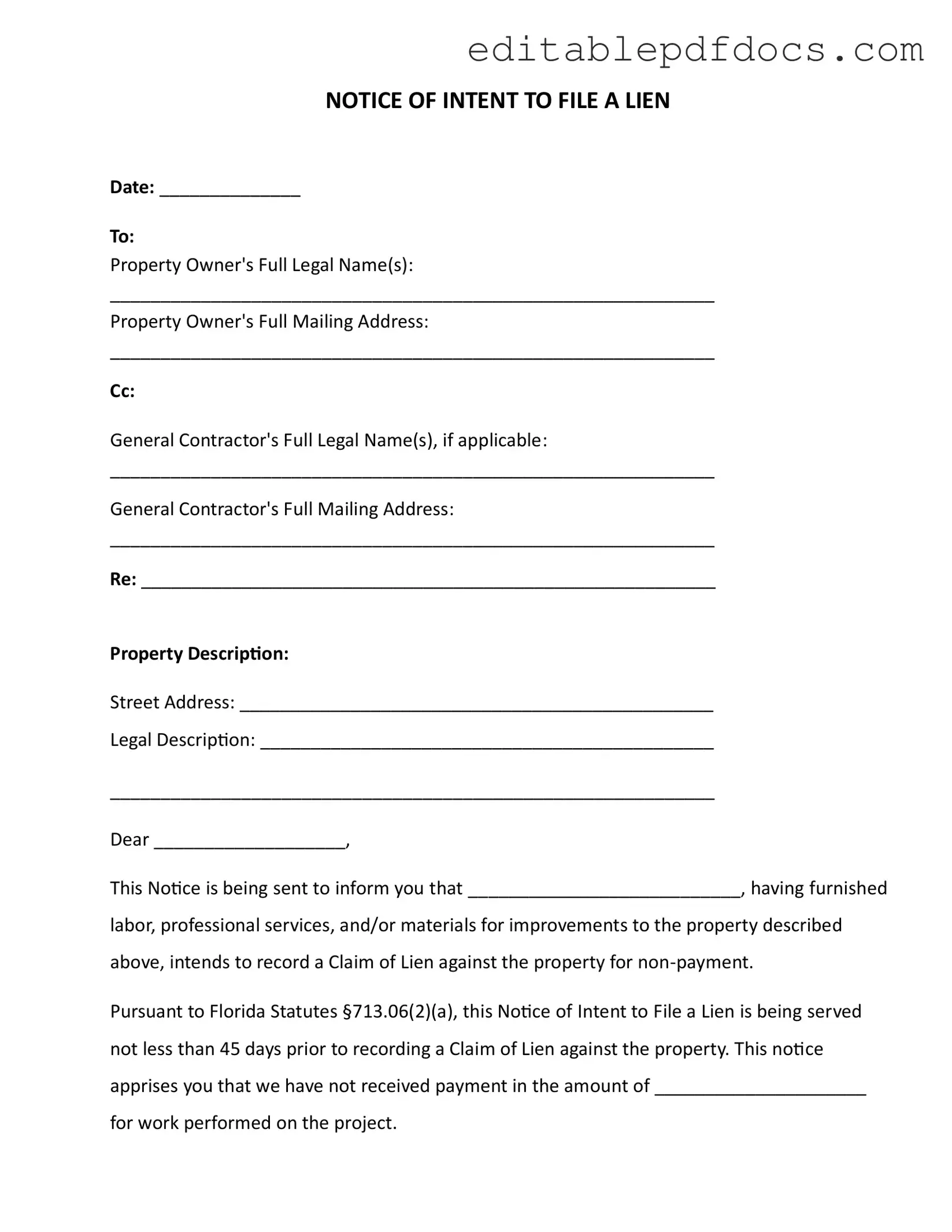When completing the Intent to Lien Florida form, individuals often make several common mistakes that can jeopardize the effectiveness of the notice. One significant error is failing to provide the correct property owner's full legal name. This information must match the name on the property deed. An incorrect name can lead to complications in enforcing the lien.
Another frequent mistake involves the mailing address of the property owner. Inaccurate or incomplete addresses can result in non-delivery of the notice, rendering the lien invalid. It is essential to verify that the mailing address is up-to-date and correctly formatted.
Additionally, individuals sometimes neglect to include the specific amount owed for the work performed. This figure should be clearly stated in the notice. Omitting this detail can create confusion and may weaken the claim, as the property owner may not understand the basis for the lien.
Moreover, many people overlook the requirement to serve the notice at least 45 days prior to filing the lien. This timeframe is mandated by Florida law. Failing to adhere to this timeline can invalidate the lien, making it crucial to plan ahead and ensure timely delivery.
Another common oversight is the lack of a proper certificate of service. This section confirms that the notice was delivered to the property owner. Without this certification, there may be challenges in proving that the notice was properly served, which can affect the enforceability of the lien.
Finally, individuals often forget to sign the notice. The absence of a signature can lead to questions about the authenticity of the document. A signature not only validates the notice but also provides a point of contact for the property owner to address the matter directly.
